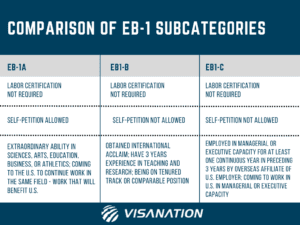Access to Reproductive Technology May Be Impeded by Workplace Law and Policy in South Africa
By Sheetal Soni
In this post, I will consider the position of assisted reproductive technologies (ARTs) under South African law, as well as the challenges posed by legislation and policy.
Broadly speaking, ARTs have made it possible for people to create and expand their families where this was previously not possible. Obstacles to reproducing include natural barriers such as infertility, or being single or in a same-sex relationship. Options such as gamete donation, surrogacy, intra-cytoplasmic sperm injection and other technologies have allowed infertile individuals to better the odds of reproducing. However, as beneficial as these ART options may be, there are other barriers to creating that family; in South Africa, these barriers include unequal access to treatment, as well as workplace laws and policies that dissuade and discourage people from seeking treatment.
The legal framework
The legal right to reproduction under South African law is found in the South African Constitution (1996). Section 12 of the statute contains the right to bodily and psychological integrity, which includes the right to make decisions concerning reproduction (reproductive autonomy). Historically this right has been interpreted in the context of avoiding, and thus choosing to terminate, a pregnancy. A woman’s right to terminate pregnancy was litigated in Christian Lawyers Association v Minister of Health in 1998, where the Constitutional Court held that section 12 would permit a woman to elect to terminate a pregnancy within the time frames set out in the Choice on Termination of Pregnancy Act of 1996. With the current variety of ARTs, the parameters of the right to reproductive autonomy have also been interpreted as including treatment options that are currently available. This constitutional right is further supported by the National Health Act and its Regulations relating to the artificial fertilization of persons, and the regulations relating to tissue, cells, organs, blood, blood products and gametes. The National Health Act (2003) and its accompanying regulations apply to fertility care generally, together with the guidelines that apply to reproductive health and fertility specialists. Surrogacy is specifically regulated under the Children’s Act of 2005, which sets out the legal requirements for a valid surrogacy agreement. Reproductive autonomy has been under intense scrutiny in South Africa, in fact, in 2022 the Constitutional Court declared the legal prohibition of preimplantation sex selection for non-medical reasons unconstitutional on the basis that it violated an individual’s right to make decisions concerning reproduction (in the case Surrogacy Advisory Group v Minister of Health 2023 (1) SA 241 (GP))
Barriers to access
A fundamental barrier to accessing reproductive technologies in South Africa is the cost of treatment. Treatments are available almost exclusively in the private health care sector only, with only certain health insurance providers funding treatment. This leaves individuals who are out of pocket, or who have access to only public health care facilities without access to treatment.
Workplace law and policy also present challenges to those wanting to access assisted reproductive technologies. If we consider the labor laws in South Africa, which, with respect to family planning, are constructed around the notion of a pregnant female, then the existing framework does not adequately support individuals who want to access treatment. The Basic Conditions of Employment Act (BCEA) states that it is compulsory for an employer to provide unpaid maternity leave for a period of 4 months. While it is not compulsory for the employee to take these 4 months of unpaid leave, the Act states further that the woman cannot return to work earlier than 6 weeks after giving birth, unless her doctor certifies that she is able to do so. Many workplaces build on the legislated 4-month maternity leave provision by adding a salary benefit, or extending the time period for leave. The Unemployment Insurance Act (2001) will financially support a woman on maternity leave if her employer does not offer paid leave, provided she has contributed to the unemployment fund.
Fathers were previously offered no dedicated leave options when their partner gave birth to their child, with the only available option being three days of family responsibility leave. However, the labor laws have been amended in South Africa to now offer parents 10 days of parental leave. This leave is available to same-sex couples, or either a male or female parent, depending on the circumstances. Women who give birth, however, will not qualify for such leave, and will instead qualify for 4 months of maternity leave. However, some workplace policies are inherently discriminatory, in that they only permit a woman to go on maternity leave for a certain number of times within her employment at the company.
These are the basic laws regarding pregnancy and family in South Africa. If we consider specific legal protection for accessing ARTs, then that protection begins to dissipate. For individuals undergoing fertility treatment, or for accessing other options such as egg freezing, there is no dedicated leave benefit for employees. Employees will have to use part of their annual leave allowances, or sick leave benefit, depending on the policies and options available at their workplace. This in itself can add to the cost of reproductive health care for people who work in environments that are not supportive of this health care service. In many workplaces, women often feel a sense of vulnerability when it comes to having a child, and the fear of not wanting to jeopardize their employment or promotion prospects is compounded by the unsupportive labor framework that does little to promote individuals seeking the reproductive options that may be available to them.
Looking to the future
Labor laws in South Africa are under consistent scrutiny as societal and workforce changes force their reconsideration. These laws and workplace policies must also accommodate developments in reproductive technologies, which test their relevance and applicability. For instance, early challenges included consideration of benefit options for employees who chose to adopt children. When surrogacy became possible, the labor law legislation was again interpreted to consider what legal protections would be available to commissioning parents who had a baby via a surrogate. In this regard, a parent who have children by commissioning the services of a surrogate mother is entitled to the 4-month maternity leave benefit in terms of employment legislation. On the horizon, emerging technology such as ectogestation, which is the continuation of a pregnancy outside of a female womb, will challenge the legal system in new ways. Ectogestation will challenge the labor law framework, which was designed to protect a female employee who is carrying a child in the traditional medical sense. It is conceivable, if ectogestation ever becomes a mainstream treatment option available to parents, that the concept of parental leave in South Africa may be expanded to apply to families whose child is born as a result of being housed in an artificial womb for the latter part of its gestation. Alternatively, the idea of maternity leave may be simplified to be interpreted as applying in the case of a child being born in a number of ways – ectogestation being one of them. What is clear is that emerging reproductive technologies require us to consider the legal framework in a fresh and contemporary way, and to adapt it to accommodate challenges that these technologies may present.
Sheetal Soni is a Senior Lecturer and Deputy Academic Leader: Teaching and Learning at the University of KwaZulu-Natal School of Law, South Africa.






